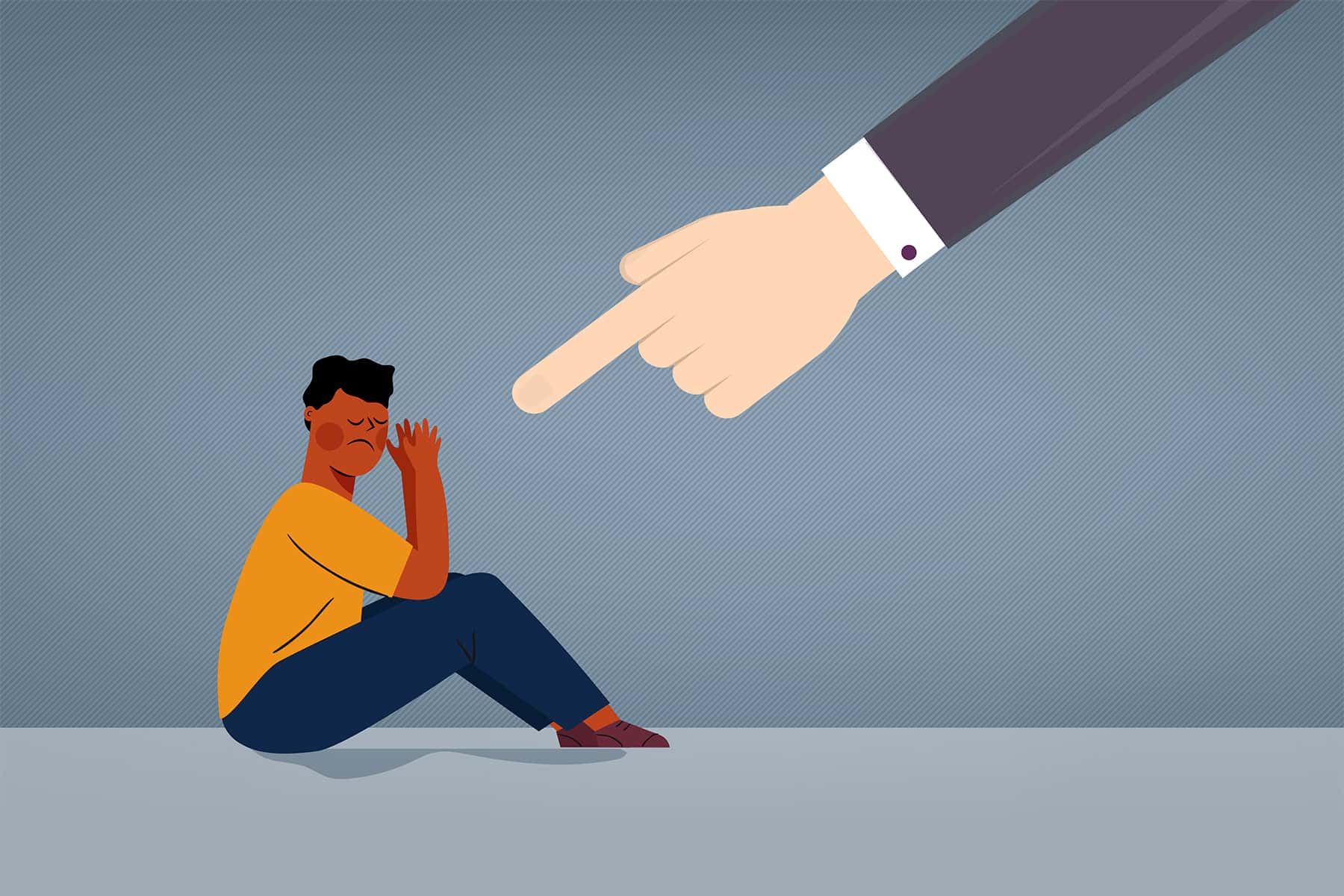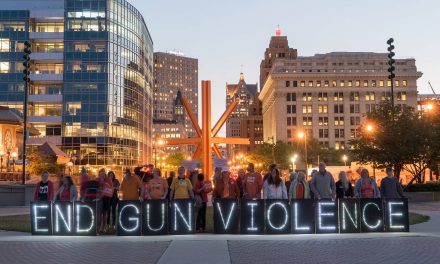
In recent weeks I have begun to notice a pattern developing. I have heard similar language used by people pushing back against the conversations about systemic racism. Some old tried and true tropes are making the rounds and leading to fear by some who are trying to have real conversations about racism for the first time in their lives.
You may have noticed it yourself. They call these conversations about systemic racism rhetoric. They claim there are always two sides to the story but always feel their side is the only legitimate one. They pushback against ideas which make them uncomfortable and try their hardest to make others drop any attempts to talk about these things publicly. They accuse promoters of racial justice with being so-called “reverse racists.” It shows how nervous they are about the truth finally coming out. They are frightened that this house of cards they have built to promote the supremacy of Whites will fall down.
I have written about the disrespectful nature of the term All Lives Matter and seen the vitriolic responses by some on social media. It does not bother me. I am used to it. I know the playbook. It is as old as American racism. The basic nature of this backlash is to distract us by constantly trying to change the subject.
Those who do not want to talk about racism will go out of their way to not debate the merits of the arguments for systemic racism by attempting to change the subject and get you off topic so that you never come back to the topic at hand. Don’t fall for this. They ignore the research which show the deleterious nature of systemic racism and the harm it causes, physically, mentally, and socially. They want people of color to think it’s all in our minds, that we are making it up.
I have had people reach out to me for advice in these situations, where they hear the voices of those on the other side. I have told them all the same thing. Don’t get distracted, stay the course, and keep on message.
It is far too easy to argue with these “mass distractors” and get lost in the fog. People who want to maintain the status quo use the same means to maintain it that they always have. One of their favorite tools is to blame the victim.
“What was Pearl Harbor doing in the Pacific?” – Zero Mostel, impersonating a Dixiecrat Senator examining the causes of WWII
This is how William Ryan began his book Blaming the Victim. He describes Mostel as using in a humorous way the classic case of victim blaming. Chapter one of the book is titled, “The Art of Savage Discovery: How to Blame the Victim.”
“the same process has been going on every day in the arena of social problems, public health, anti-poverty programs, and social welfare. A philosopher might analyze this process and prove that, technically, it is comic. But it is hardly ever funny.”
The book was published in 1972 and revised in 1976. The same things Ryan discussed then are just as accurate now because, as I said earlier, the playbook of those fighting tooth and nail to maintain the status quo does not really change.
What changes is our recognition of their tools. They try to cover-up what they are doing with what many refer to as “dog whistle” language. Ian Haney Lopez described this as “coded racial appeals that carefully manipulates hostility toward non-Whites.” The language patterns I have notice recently are classic examples of both processes playing out simultaneously.
Because we are well aware of protests about police brutally many have come out with the old “Black-on-Black crime” trope to distract us. I have heard far too many times recently the “they are disrespecting those who serve” by taking a knee. This is usually accompanied by the “sports is not the place for politics” argument. Then the old “if you don’t like America then you can get out” line that former NFL coach Mike Ditka just used recently.
Ryan describes how victim blaming works in this way.
“Victim-blaming is cloaked in kindness and concern, and bears all the trappings and statistical furbelows of scientism; it is obscured by a perfumed haze of humanitarianism. In observing the process of Blaming the Victim, one tends to be confused and disoriented because those who practice this art display a deep concern for the victims that is quite genuine. In this way, the new ideology is very different from the open prejudice and reactionary tactics of the old days. Its adherents include sympathetic social scientists with social consciences in good working order, and liberal politicians with a genuine commitment to reform. They are very careful to dissociate themselves from vulgar Calvinism or crude racism; they indignantly condemn any notions of innate wickedness or genetic defect.”
What they do is find a characteristic that a group of people share, (race, socioeconomic status, and such) and use it as the cause of their “disfunction.” John Seeley, author of “The Problems of Social Problems,” referred to it as “naming it as a problem, after naming it as a problem.” Using this logic of describing so-called social problems Ryan says the next step is:
“applying this explanation is to look sympathetically at those who “have” the problem in question, to separate them out and define them in some way as a special group, a group that is different from the population in general. This is a crucial and essential step in the process, for that difference is in itself hampering and maladaptive. The Different Ones are seen as less competent, less skilled, less knowing—in short, less human…the victim of social problems is identified as strange, different—in other words, as a barbarian, a savage. Discovering savages, then, is an essential component of, and prerequisite to, Blaming the Victim, and the art of Savage Discovery is a core skill that must be acquired by all aspiring Victim Blamers. They must learn how to demonstrate that the poor, the Black, the ill, the jobless, the slum tenants, are different and strange. They must learn to conduct or interpret the research that shows how “these people” think in different forms, act in different patterns, cling to different values, seek different goals, and learn different truths. Which is to say that they are strangers, barbarians, savages. This is how the distressed and disinherited are redefined in order to make it possible for us to look at society’s problems and to attribute their causation to the individuals affected.”
This is how Americans consistently blame the Black community for their “problems.” Black people are their own worst enemies we hear some say. In this fashion we get distracted. When talking about police murders of unarmed Blacks, the so-called “Black-on-Black crime” narrative will come into the conversation. Black victims are then responsible for being killed by police because they “were not complying with lawful orders” or “were acting suspiciously” or in the most extreme use of this explanation “moved in a way that made them seem to be drawing a weapon.” Never mind the fact that no weapon is ever found. As long as the officer thought the cell phone in their hand was a potential weapon, it becomes justified homicide.
The ways in which Black people react to generations of systemic racism are then labeled social problems. Blaming the victim requires that “we are led unerringly to certain beliefs about the causes of these problems. We cannot comfortably believe that we are the cause of that which is problematic to us; therefore, we are almost compelled to believe that they—the problematic ones—are the cause and this immediately prompts us to search for deviance. Identification of the deviance as the cause of the problem is a simple step that ordinarily does not even require evidence” according the Ryan.
Many who want to maintain their privileged status in America have become experts in ignoring evidence that contradicts their view of Black people. They claim that “if Black people did the same as the Italian and Irish immigrants and pulled themselves up by their bootstraps” then they would not have the problems they have. They conveniently ignore the fact that neither of these groups of “immigrants” had Black skin, were kidnapped from their homelands and forced to come to this part of the world by the millions, were enslaved for two and a half centuries in the “land of the free” and never had any boots to begin with. Those statements are tools designed to distract us. Ignore the facts and go with your gut is the methodology of victim blamers. Your unconscious mind has been filled with negative images and thoughts of Black people for so long that you struggle to see them in a positive way. Your gut tells you that “every stereotype is based on some level of facts.”
C. Wright Mills studied textbooks to see how social problems are covered. He found these common threads according to Ryan.
First, the textbooks present material about these problems, he says, in simple, descriptive terms, with each problem unrelated to the others and none related in any meaningful way to other aspects of the social environment. Second, the problems are selected and described largely according to predetermined norms. Poverty is a problem in that it deviates from the standard of economic self-sufficiency; divorce is a problem because the family is supposed to remain intact; crime and delinquency are problematic insofar as they depart from the accepted moral and legal standards of the community. The norms themselves are taken as givens, and no effort is made to examine them…Within such a framework, then, deviation from norms and standards comes to be defined as failed or incomplete socialization—failure to learn the rules or the inability to learn how to keep them. Those with social problems are then viewed as unable or unwilling to adjust to society’s standards, which are narrowly conceived by what Mills calls “independent middle class persons verbally living out Protestant ideas in small town America.”
In this fashion, other underlying factors like centuries of overt racism are ignored. When we hear people say that racism is not the cause of police killings of unarmed Black people they are using this logic to make their case. If Black people would just act like “normal people” meaning White middle class folk, then they would not get killed by police is how the argument goes.
Included within this ideology are rationalizations. They feel a need to rationalize the huge racial disparities by blaming the victims for these conditions. For most of America’s history, racist White people simply said out loud what they believed and did not care how they were judged. They did not care that they were being hypocrites by claiming to love “freedom, justice, and liberty” while denying it to people of color in every aspect of American life.
In the 1930s the Federal Housing Administration wanted to ensure White people became homeowners and Black people did not. They laid out the process in their underwriting manuals. They promoted the use of racially restrictive covenants which created all-White communities in very clear language. These are a few examples from the 1936 underwriting manual.
“Natural or artificially established barriers will prove effective in protecting a neighborhood and the locations within it from adverse influences. Usually the protection against adverse influences afforded by these means include prevention of the infiltration of business and industrial uses, lower-class occupancy, and inharmonious racial groups.”
“The Valuator should investigate areas surrounding the location to determine whether or not incompatible racial and social groups are present, to the end that an intelligent prediction may be made regarding the possibility or probability of the location being invaded by such groups. If a neighborhood is to retain stability it is necessary that properties shall continue to be occupied by the same social and racial classes.”
“Thus, although physical surrounds of a neighborhood area may be favorable and conducive to enjoyable, pleasant living in its locations, if the children of people living in such an area are compelled to attend school where the majority or a goodly number of the pupils represent a far lower level of society or an incompatible racial element, the neighborhood under consideration will prove far less stable and desirable than if this condition did not exist.”
“Recommended restrictions include the following: … Prohibition of the occupancy of properties except by the race for which they were intended.”
“Schools should be appropriate to the needs of the new community and they should not be attended in large numbers by inharmonious racial groups.”
This is part of the reason the huge gap in homeownership exists today. Americans love to look at Apartheid in South Africa and talk about how horrible it was. They ignore the fact that most of those specific policies were not fully implemented and promulgated into law until 1948. Apartheid in America also known as Jim Crow was implemented many decades before and lasted significantly longer. Apartheid ended fifty years after the openly racist National Party government was elected in 1948. Jim Crow laws such as felon disenfranchisement laws are still on the books in the United States today.
Jim Crow was defended for centuries by honest White Americans. They saw no need to sugarcoat their feelings of the superiority of White people. For many years this idea of the “Negro problem” was a common refrain in America. Jim Crow was designed as a tool to mitigate this problem. W.E.B. DuBois wrote in his classic the Souls of Black Folk:
“Between me and the other world there is ever an unasked question: unasked by some through feelings of delicacy; by others through the difficulty of rightly framing it. All, nevertheless, flutter round it. They approach me in a half- hesitant sort of way, eye me curiously or compassionately, and then, instead of saying directly, How does it feel to be a problem? they say, I know an excellent colored man in my town; or, I fought at Mechanicsville; or, Do not these Southern outrages make your blood boil? At these I smile, or am interested, or reduce the boiling to a simmer, as the occasion may require. To the real question, How does it feel to be a problem? I answer seldom a word.”
In America, many White people openly discussed this “Negro problem.” Author I. A. Newby catalogued this thought in his 1965 book, Jim Crow’s Defense: Anti-Negro Thought in America 1900-1930. Edward Eggleston of Virginia expressed the idea of Jim Crow’s delineation of superiority of Whites as equated with natural law in his book, “The Ultimate Solution of the American Negro Problem.”
“Wherever there are great masses of an inferior race closely associated with a superior, the fittest must survive and exercise supervision and control over the unfit. This is an inflexible and irrevocable decree of mankind in all ages and in all lands, reinforced and uniformly supported by natural law throughout the entire kingdom of living things; a law superior to ordinary interpretations of justice … The development of political institutions and the growth of mankind are under the operation of law, as controlling as the laws of the natural world around us, and no interference of any power can permanently put “the bottom rail on top.”
In a 1910 volume of the Columbia University Studies in History, Economics and, Public Law, Howard W. Odum wrote about how education of Blacks was bad for the country.
“The young educated negroes are not a force for good in the community but for evil … and they spread dissatisfaction among the members of their race … It is clear that their moral natures are miserably perverted.”
I hear the same sentiments in those who claim we are now somehow perverting history by telling a story of American history which conflicts with the lies we have all been taught. They claim people of color, particularly Blacks, are blaming White people for their problems as if they had nothing do with the situation. Any cursory reading of American history provides copious evidence that Whites are a significant cause of their “problems.” Those voices now that are working so hard to distract us by changing the subject and bad mouthing the mere utterance of the phrase Black Lives Matter are playing the same tricks. They consider the protest to be “not a force for good in the community but for evil.”
Henry M. Field in 1894 wrote that:
“the negro is not an abnormal specimen of humanity; he is simply a child, and to be treated as a child … So these Americans of African descent are but children in understanding, and are to be treated like children.”
This paternalistic attitude is alive and well among those who want us to stop protesting, and stop complaining about how horrible America is to us and to stop bringing up racism. They think we are children. We are not. We are intelligent enough to counter this nonsensical counter argument by exposing America for what it has always been. The world is watching. Our eyes are wide open.
“Anti-Negro thought was always essentially negative. Racists were against social and political equality, against “uppity” Negroes dissatisfied with discrimination, against reformers seeking to alter the status quo. They emphasize the Negro’s racial incapacity, his social inferiority, his personal deficiency, his inability to adjust to White society. They supported policies of discrimination, subordination, and repression … they undertook to convince the public that their principle objectives were positive.”














